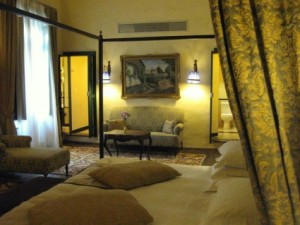
Photo © Michael Sommers.
Foreign travelers who check into Brazilian hotels and pousadas might notice that no matter what the size, or price, of the establishment, when it comes to lighting, there is a definite predilection for bulbs of a fluorescent nature.Brazil’s Fluorescent Revolution dates back to the early aughts. Insufficient rainfall and a lack of investment in infrastructure (close to 90 percent of Brazil’s energy is supplied by hydroelectric dams), combined with rising energy demand, led to a series of crippling shortages that forced the government to implement a nationwide rationing program.
In an effort to curb consumption, Brazil went from energy-wasting incandescence to energy-saving fluorescence.Businesses and private citizens were all placed on an energy diet. Companies and families who consumed more than their monthly electricity quota were faced with hefty fines. In an effort to curb consumption, Brazil went from energy-wasting incandescence to energy-saving fluorescence.
Presently, Brazilians purchase 300 million incandescent light bulbs and 100 million compact fluorescent bulbs annually. However, the market for fluorescent bulbs is growing by 20 percent a year. Moreover, following the lead of Europe and Argentina, early this year the Brazilian government passed a law banning the use of incandescent bulbs. Beginning in 2012, bulbs of 40 Watts and over will be taken off the market and by 2016 supermarket and hardware stores throughout the land will no longer carry them.
Call me retrograde, but despite the fact that they last much longer and consume much less energy – a single compact fluorescent bulb uses 20 to 30 percent of the energy of an incandescent bulb and can light up your life 8 to 15 times longer—I’m not a fan of fluorescent lighting. Cold, sterile, unflattering, green-tinged, and institutional are all adjectives that still come to mind when I contemplate the possibility of being stuck in a space whose light source is fluorescent. But I must admit that the more I travel, the more I’m starting to see the light.
Chalk it up to technology or decorator’s savvy, but recently, when confronted with the task of reviewing an upscale Brazilian hotel (such as Salvador’s Convento do Carmo, pictured above), I’ve often found myself peering beneath an elegant silk or damask lamp shade only to find that the carefully camouflaged source of the soft, romantic, and even sometimes bright-enough-to-read-by light is downright fluorescent. So maybe there really is life after incandescence.